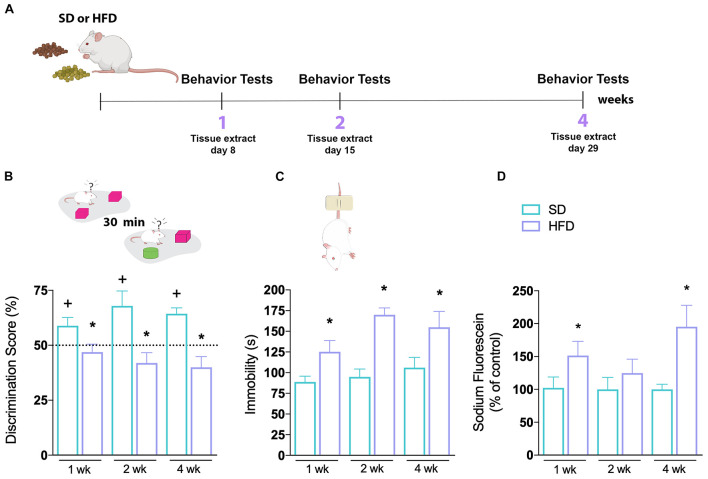FIGURE 1.
Hippocampal abnormalities of mice fed a high-fat diet. (A) First time-course experimental design. (B) Novel object recognition (NOR) and (C) tail suspension tests (TSTs) were performed in mice fed SD or HFD for 1, 2, and 4 weeks. Cognitive performance of SD and HFD-treated mice was accessed by NOR (n = 7–8/group; one-sample t-test with hypothetical value of 50%). Time of immobility in TST was recorded in order to evaluate depressive-like behavior (n = 7–8; unpaired t-test for 1, 2, and 4 weeks of diet, respectively). (D) Sodium fluorescein assay to evaluate BBB permeability on hippocampus (n = 5–7; t-test for 1, 2, and 4 weeks of diet). Values are mean ± SEM. +Means higher than the hypothetical value of 50%, *p < 0.05 SD vs. HFD, +discrimination score above 50%.

